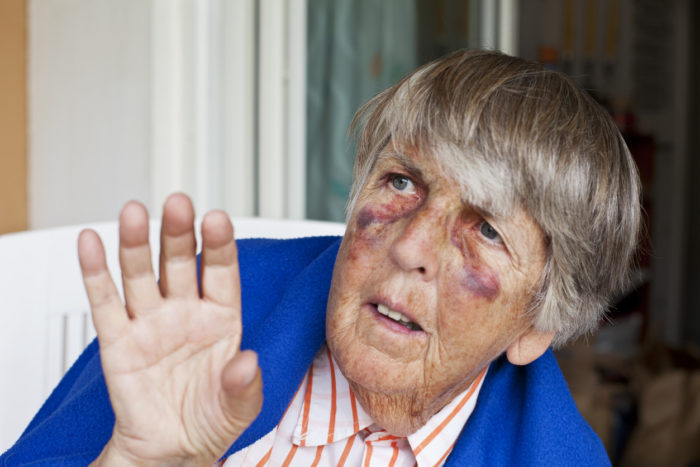Elder Abuse: Signs, Symptoms You Can Identify
The mistreatment of the aged is a societal ill that, sadly, is unlikely to be cured soon. The statistics tell the story. By 2025, the global population of seniors (defined as those age 60 and older) will reach 1.2 billion. Thirty years ago, that figure was 542 million.
As the elderly live longer because of enhancements in health care, it means greater numbers will be vulnerable to abuse, whether physical, psychological, sexual or verbal. It is important for family members and friends with loved ones in assisted-living facilities and nursing homes to check in on their elders often and know how they are feeling and if their needs are being met. Caregivers and respite caregivers also have that responsibility. So does the general public. The impacts of abuse are harmful and even deadly.
“At first, you might not recognize or take seriously signs of elder abuse,” according to Helpguide.org. “They may appear to be symptoms of dementia or signs of the elderly person’s frailty – or caregivers may explain them to you that way. In fact, many of the signs and symptoms of elder abuse do overlap with symptoms of mental deterioration, but that doesn’t mean you should dismiss them on the caregiver’s say-so.”
Signs and symptoms of overall elder abuse include arguments between a caregiver and a patient, which can point to tension in their relationship, and a change in demeanor or personality in an elder. Here are tips for recognizing other types of elder abuse.
Physical abuse
- Bruises, scars and welts on the body that appear out of nowhere and for which a caregiver has no explanation.
- Ankle and wrist sprains, dislocated joints and fractured bones.
- Marks that look like a patient has been restricted by ropes or straps.
Broken eyeglasses.
- Not enough, or too much, prescription medicine being dispensed. (Are there too few pills remaining in the bottle or too many?)
Psychological abuse
- Belittling, mocking and threatening behavior and words aimed at an elder.
- Behavior and words from an elder that appear demented, such as mumbling to oneself and rocking back in forth in a bed or chair.
Sexual abuse
- Ripped and torn clothing and clothing stained.
- Bleeding from and trauma to the genital area.
Verbal abuse
- Depression and withdrawal.
- Lack of participation in activities an elder once enjoyed.
- Weight loss.
“If you see signs of abuse, try talking with the older person to find out what’s going on,” the National Institute on Aging’s Web site states. “For instance, the abuse may be from another resident and not from someone who works at the nursing home or assisted living facility. Most importantly, get help.”
Financial exploitation also is a form of elder abuse. It can be detected as simply as logging on to an elder’s bank account and looking for abrupt balance changes and missing funds. Are jewelry, silver and other items of value missing from an elder’s home? Have there been any unrequested changes to an elder’s will and trust? Is than elder’s credit card being used for purchasing unnecessary goods and services? Are an elder’s bills going unpaid even though there is enough money to pay them?
“Elder abuse is a relatively new field that raises many complex ethical, legal, and clinical questions,” reports the National Committee for the Prevention of Elder Abuse. “It has challenged our understanding of such fundamental concepts as personal freedom, the role of culture in defining family responsibility, and society’s obligations to its members.”
Share This



